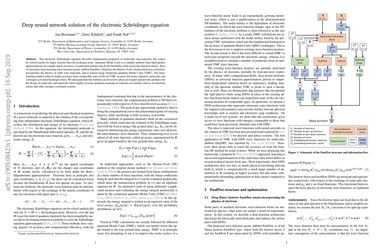Deep neural network solution of the electronic Schrödinger equation
[New and updated results were published in Nature Chemistry, doi:10.1038/s41557-020-0544-y.] The electronic Schr\"odinger equation describes fundamental properties of molecules and materials, but can only be solved analytically for the hydrogen atom. The numerically exact full configuration-interaction method is exponentially expensive in the number of electrons. Quantum Monte Carlo is a possible way out: it scales well to large molecules, can be parallelized, and its accuracy has, as yet, only been limited by the flexibility of the used wave function ansatz. Here we propose PauliNet, a deep-learning wave function ansatz that achieves nearly exact solutions of the electronic Schr\"odinger equation. PauliNet has a multireference Hartree-Fock solution built in as a baseline, incorporates the physics of valid wave functions, and is trained using variational quantum Monte Carlo (VMC). PauliNet outperforms comparable state-of-the-art VMC ansatzes for atoms, diatomic molecules and a strongly-correlated hydrogen chain by a margin and is yet computationally efficient. We anticipate that thanks to the favourable scaling with system size, this method may become a new leading method for highly accurate electronic-strucutre calculations on medium-sized molecular systems.
PDF Abstract

